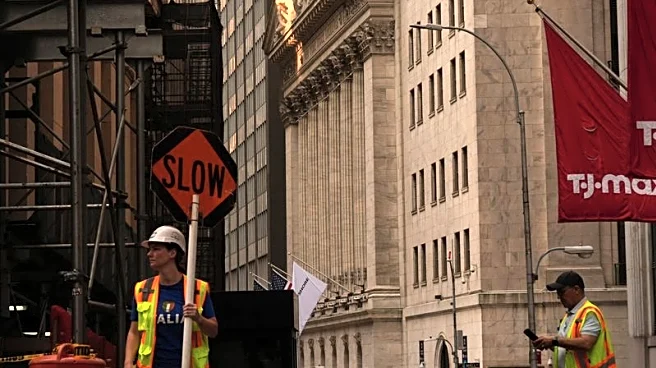What's Happening?
The Federal Reserve is contemplating a significant rate cut following a disappointing U.S. jobs report for August, which showed only 22,000 jobs added, far below the forecast of 75,000. The Bureau of Labor Statistics also revised previous months' job figures, indicating a net loss in June and modest gains in July. This data has increased expectations for a quarter-point rate cut, with a possibility of a half-point reduction. The CME Group's FedWatch tool now shows a 12% chance of a 50 basis point cut in September. The weak jobs report has led to lower Treasury yields and record-high gold prices.
Why It's Important?
The potential rate cuts by the Federal Reserve are crucial for the U.S. economy, as they could stimulate economic activity by lowering borrowing costs. This move may help counteract the slowing labor market and address inflation concerns. Investors and businesses are closely watching these developments, as rate cuts can influence stock market performance, consumer spending, and overall economic growth. The decision will also impact financial markets, with implications for interest rates, investment strategies, and economic stability.
What's Next?
The Federal Reserve's decision on rate cuts will be influenced by upcoming economic data, including benchmark revisions and CPI figures. Stakeholders in the financial sector will assess the impact of these cuts on market dynamics and economic forecasts. The Fed's actions may set the stage for further rate adjustments later in the year, depending on labor market conditions and inflation trends.












